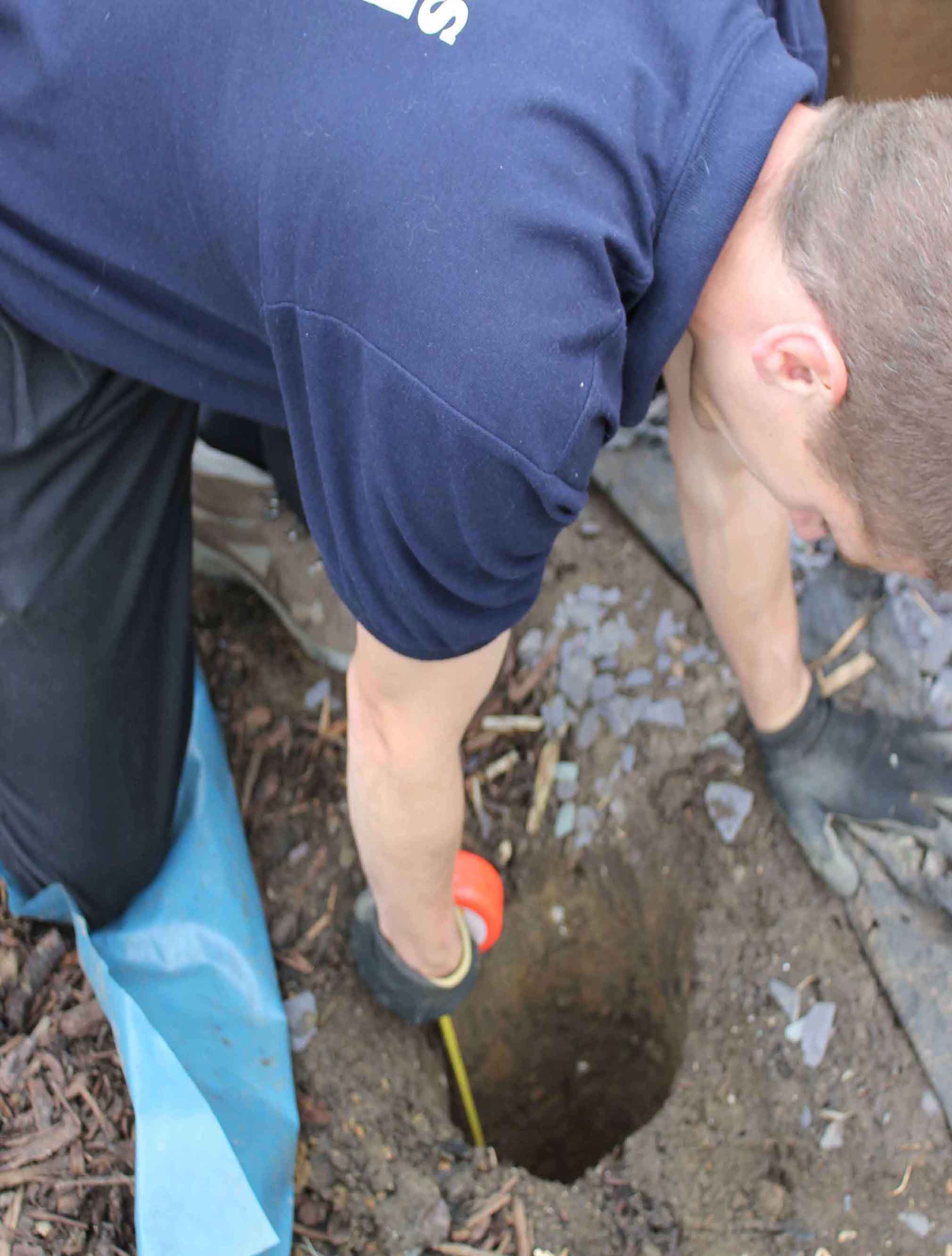02/02/2024 10:30 AM
How deep should a fence post hole?
One of the common questions we get asked is 'how deep should I install a fence post into the ground?'. There is no, one size fits all in this circumstance, as it will depend on ground conditions and the height of the fence.
Our standard recommended depth of a fence post hole is 600mm.
To begin, we suggest digging the post hole so it is approximately three times wider than the fence post. For example, if you have a 3 inch wide post that you need to sit over 1.83m (6ft) in height above the ground, we recommend the hole size should be: 230mm [wide] (9”) x 600mm [depth]. This rule of thumb can be followed for all size posts (e.g. a 6ft high fence would require a hole depth of at least 600mm or 2ft). We do not recommend every post hole to be the same no matter the height of the fence post.
What size posts do I need for my fence?
As mentioned earlier, our standard recommended depth for a fence post hole is 600mm. Therefore, when calculating the length of a post, you should add at least 600mm to the desired height of the fence.
The table below lists the heights of fence panels and gravel boards along with the recommended post lengths. It also includes our most popular wooden slotted Jakpost
Additionally, there are options for standard square posts, metal Mi-T garden fence posts, and heavy-duty slotted Jakposts. For more information on choosing the right type of fence post, including when to use heavy-duty slotted posts, the following blog posts are worth a read:
When to use Heavy Duty PostsDifferent types of fence post
|
Panel Height |
Slotted Inter Post |
Corner Post |
Post Height |
Post Hole Depth |
|
0.75m/0.89m |
667200 |
667220 |
1.50m |
600mm |
|
1.05m/1.19m |
667300 |
667330 |
1.80m |
600mm |
|
1.40m/1.54m |
667400 |
667440 |
2.10m |
600mm |
|
1.65m/1.79m |
667500 |
667550 |
2.40m |
600mm |
|
2.00/2.14m |
667800 |
667880 |
2.70m |
600mm |
| Above 2.14m | Use Heavy Duty Slotted Fence Posts | Please Contact Us | ||
For a post at the end of a fence run, use an intermediate post and add an additional End Post Strip.

Safety first
We strongly recommend before you start digging your fence post hole that you either check for any mains electrics or contact your utility company to mark any underground cables or hazards. Doing this also allows for you to reassess the fence line, layout and any positioning issues to make sure everything is exactly where you require it.
Wooden or concrete posts
If using timber posts it is important to note that they must be set in either concrete or Post Fixing Mix on top of a minimum of 2 inch ballast/gravel. This is to allow drainage to take place between the post and the concrete. For the best results we recommend using rapid drying Post Fixing Mix. Always try to angle Post Fixing Mix slightly so it can shed water away.
For additional advice about the positives and negatives for both concrete and wooden fence posts, giving you a fair evaluation of each type see our blog covering the topic.
Tools required
- Rabbit hole digger
- Hand shovel
- Hammer
- Garden stakes
- Measuring tape
- Level
- Concrete / Post Fixing Mix
Top tip
If you are planning on doing DIY we highly recommend a post hole digger or a rabbit hole digger which is essentially a single shovel that has been designed to dig circular holes. The unique design enables the user to dig straight down to the ideal depth and keep the hole relatively narrow in diameter compared to a conventional shovel.
Why not use a local Jacksons Approved Installer to undertake the job for you?
Please note: we would not recommend installing fence posts without the use Post Fixing Mix
This blog is designed to help you with installing a fence post. We have official wooden fence posts instructions that you can view by clicking the link below.
Timber Fence Post Instructions